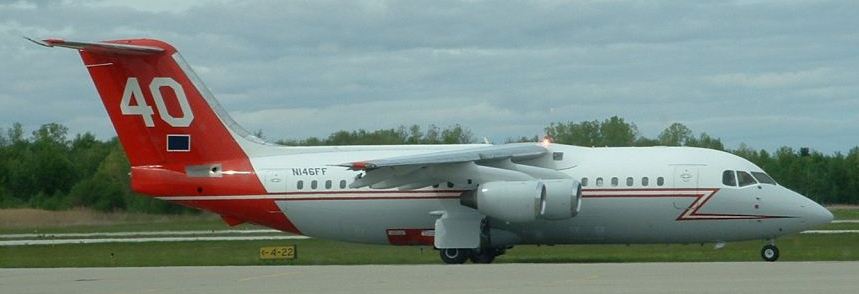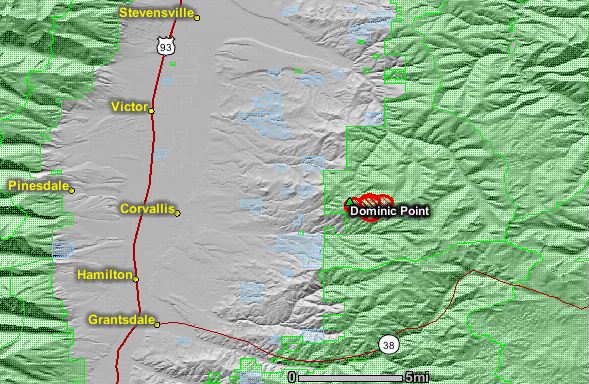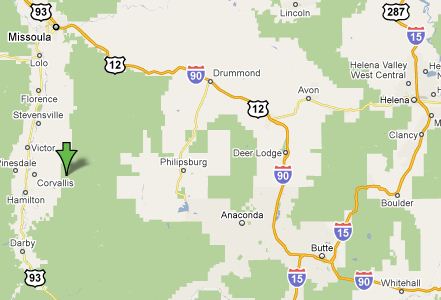
With the cool weather we were having a few weeks ago, I was wondering if summer would ever get here. Today my vehicle’s thermometer said it was 101 degrees in Rapid City.
News and opinion about wildland fire

With the cool weather we were having a few weeks ago, I was wondering if summer would ever get here. Today my vehicle’s thermometer said it was 101 degrees in Rapid City.
KPAX is reporting that Neptune Aviation is going to test a “new generation of air tankers” beginning today, July 26, at the Missoula International Airport.
Beginning on Monday, there will be multiple aerial retardant drops on a U.S. Forest Service grid at the airport.
The grid elevations are one of several steps in the process to develop the new generation of air tankers.
We are thinking that they will be testing their new Tanker 40, Neptune Aviation’s BAe-146 conversion, that we covered on May 26. This drop testing is no doubt part of the process to confirm the retardant coverage, part of the process toward obtaining certification from the Interagency Air Tanker Board.

Win a free Wildfire Today coffee mug!
 The first person to submit a very good photo of Tanker 40 dropping will win a Wildfire Today coffee mug! (Not just ANY photo — it has to be a very good photo.) Send your photos to bill d o t wildfiretoday a t g mail d o t c o m. If you can’t figure out that spam-defeating address, drop us a line at our Contact Us page.
The first person to submit a very good photo of Tanker 40 dropping will win a Wildfire Today coffee mug! (Not just ANY photo — it has to be a very good photo.) Send your photos to bill d o t wildfiretoday a t g mail d o t c o m. If you can’t figure out that spam-defeating address, drop us a line at our Contact Us page.
UPDATE @ 7:45 p.m., July 26
I don’t know if Neptune tested Tanker 40 today or not, but here is a photo of it sitting in a hangar at Missoula airport this evening.


This map shows the location of the Dominic Point fire which is about 8 miles east of Corvallis, MT and about 12 miles northeast of Hamilton. As we reported yesterday, the fire was first detected at 3 p.m. on July 25. The photo we posted then showed very active burning within two hours of the first report.

The Situation Report, using data from last night, listed the size at 300 acres, but this fire might have some potential. Resources assigned at that time included two crews, two helicopters, and eight engines.
The fire briefly threatened the Willow Mountain Lookout tower, but a helicopter evacuated the lookout and four civilians after the fire cut off the only road leading out of the area.
We will post more information here as it becomes available.
UPDATE @ 12:10 p.m. MT, July 26
The Bitterroot National Forest is reporting that the fire has burned 700-1,000 acres. Air tankers worked the fire heavily late yesterday and covered the Willow Point lookout with retardant, which appears to have survived so far.
Today firefighters will concentrate on limiting the fire’s spread to the west to keep it off private land in the valley which is 1.5 miles away. About 100 firefighters will be on the fire today, including three hot shot crews and four helicopters.
Rick Floch, the fire management officer for the Bitterroot NF said the area contains some really old stagnant stands of lodgepole pine and sub-alpine fir with a lot of dead fuel on the ground.
UPDATE @ 8:10 p.m. MT, July 26

The story below about the air tanker being used on a burning ship 60 miles at sea reminded me of the when a helicopter with a bucket was used to fight a structure fire in the Security Building at 101 N. Third Street in Grand Forks, North Dakota. It happened on April 19, 1997 when the city was flooded, fire trucks could not get through the water, and the city water system had failed due to the flood, making hydrants useless. An air tanker may have been used on the fire also.
I have seen photos of a helicopter dropping water on the burning structure surrounded by water, but this photo was the only one I could find. If anyone has a better picture, let us know.
What other examples are you aware of when wildland firefighting apparatus was used in a non-traditional way?

On Sunday the Dominic Point fire was discovered at 3 p.m. about 12 miles northeast of Hamilton, Montana (map). Likely a holdover from a lightning bust from a couple of days ago, it appears to be cranking, and is in hot, dry, inaccessible terrain in the Bitterroot National Forest.
The photo was taken about two hours after the fire was reported.
UPDATE at 9:16 a.m. MT, July 26 : more information, including a map of the Dominic Point fire, is now available.
An amphibious Bombardier “Superscooper” air tanker was used to help extinguish a fire on board a container ship 60 miles off the coast of Malaysia. The fire started on July 7 after the container ship M/V Charlotte Maersk left Port Klang (map) in Malaysia bound for Oman. There are reports that an explosion in one container caused the fire, which spread to 150 others.
In addition to the Superscooper, some of the resources brought to the ship to assist the crew with the fire included:
Some of the containers were burning at 1,000 degrees Celsius, and each had to be opened and extinguished one at a time, after cooling for four to six hours. A thermal camera was used to evaluate each area before firefighters began their close-in work.
After two days of firefighting the fire continued to burn, but it had been contained to the 150 containers. The main infrastructure of the vessel was not affected, and the engine, thrusters, and other equipment was still operational.
A report on July 15 said the “fire had been put out”, but some areas were still too hot for firefighters to enter. And, “There was only smoke, no more fire”. Hmmmm. How does that old saying go? “Where there’s smoke….” I forgot the rest. But we could find no other reports about the fire after July 15, so they must have eventually fully controlled it.
P.S. — the fire has a wet line all the way around it. What’s the problem? 😉